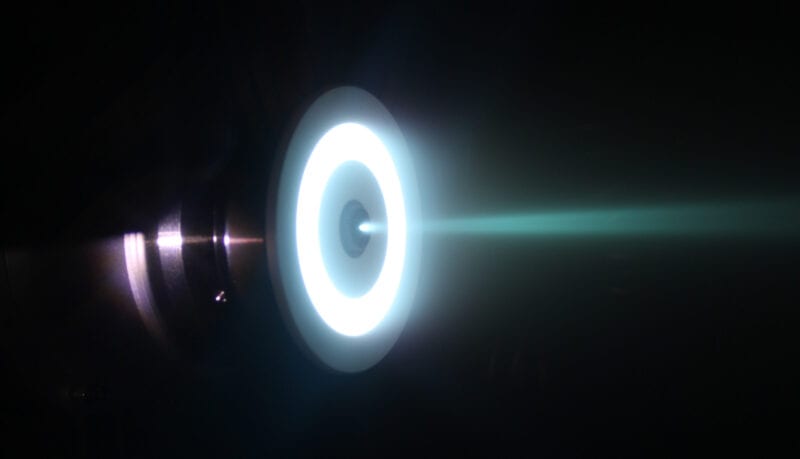Latest News

Apollo Fusion ACE thruster operating with Xenon propellant. Photo: Apollo Fusion
Apollo Fusion has been selected to provide the propulsion system for a Low-Earth Orbit (LEO) satellite constellation placed by York Space Systems. The order marks a string of successes for the propulsion start-up as it recently signed its first four commercial deals — with Saturn Satellite Networks’ constellation, Spaceflight’s orbital transfer vehicle Sherpa-LTE, and a U.S. Air Force intelligence satellite.
Apollo Fusion will provide the electric propulsion system for an unnamed customer with a LEO constellation of 10-plus satellites anticipated to launch in 2022. CEO and founder Mike Cassidy told Via Satellite that this is a significant deal for the company because it could expand to 200 propulsion systems as the constellation is already funded for growth.
Kevin McClellan, director for Business Development, told Via Satellite that Apollo Fusion had extensive conversations with prime contractors and satellite bus manufacturers to ensure the company’s propulsion design is compatible and meets all performance requirements. The company is seeing its first commercial deals after years of R&D, and hopeful to power more satellite constellations.
“This is the first fruit in terms of a constellation, where we’re seeing 10-plus satellites today, with a lot of opportunity for growth,” McClellan said. “This is also an indicator of the inflection point that we’re at, where all these conversations that we’ve been having to iterate our designs are on the verge of growth with these hundreds of satellite constellations. We think we’re very well positioned to support those.”
York will be incorporating Apollo’s ACE (Apollo Constellation Engine) — a low thrust, high efficiency, radiation hardened Hall thruster propulsion system into the LEO satellites for the constellation.
Cassidy believes the company’s propulsion system was chosen for the constellation because it is designed for scalability. Apollo Fusion works with a high-volume aerospace manufacturing partner to meet demand, and the company’s R&D lab has the capacity to execute hundreds qualification and acceptance tests per week.
In addition, the company provides both the thruster and the Power Processing Unit (PPU), which Cassidy said is more efficient than when the thruster and PPU are supplied by separate companies. “If we’re providing both, we can’t do the finger-pointing. It’s our responsibility to make them both work,” he said.
Get the latest Via Satellite news!
Subscribe Now